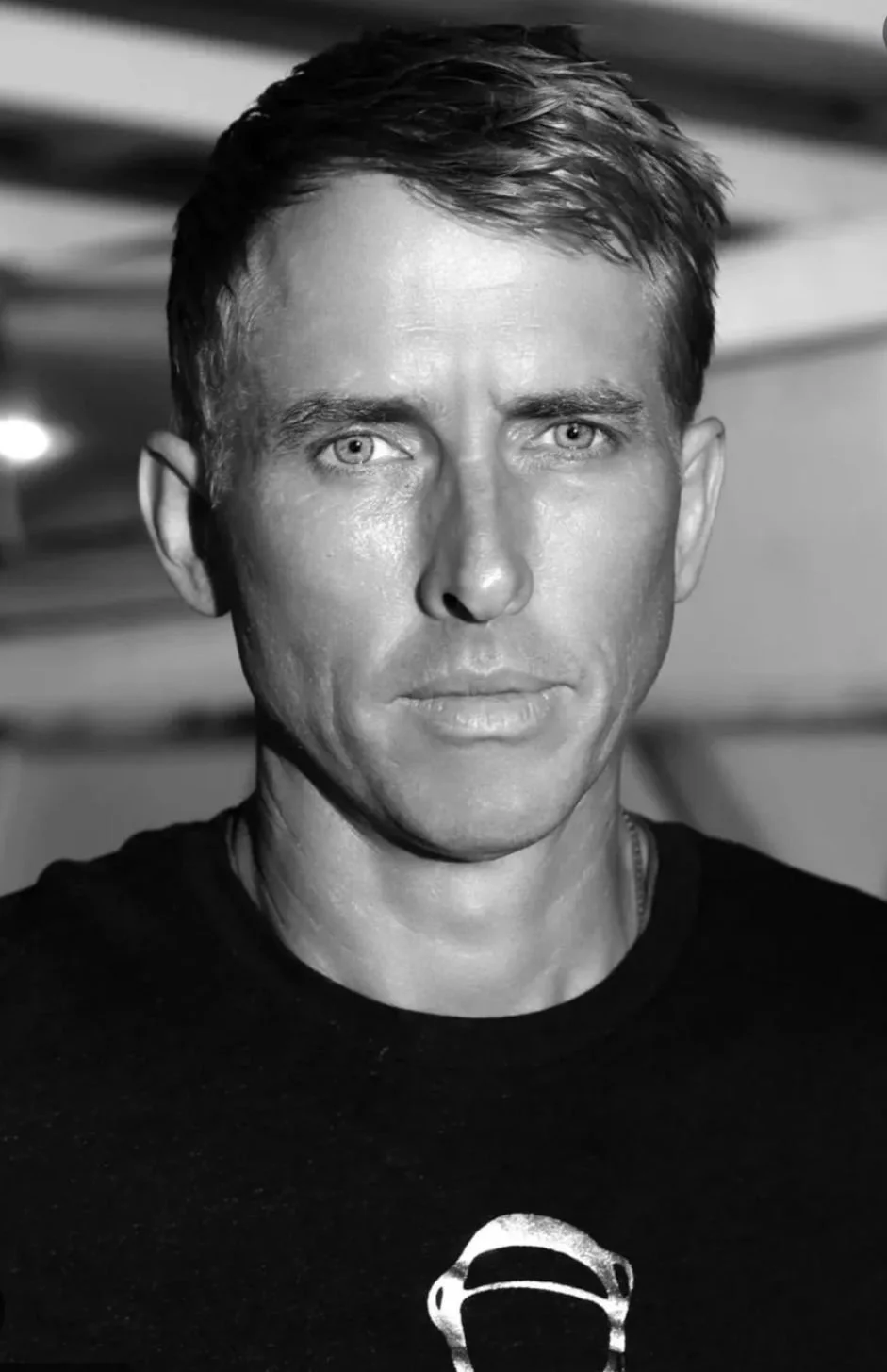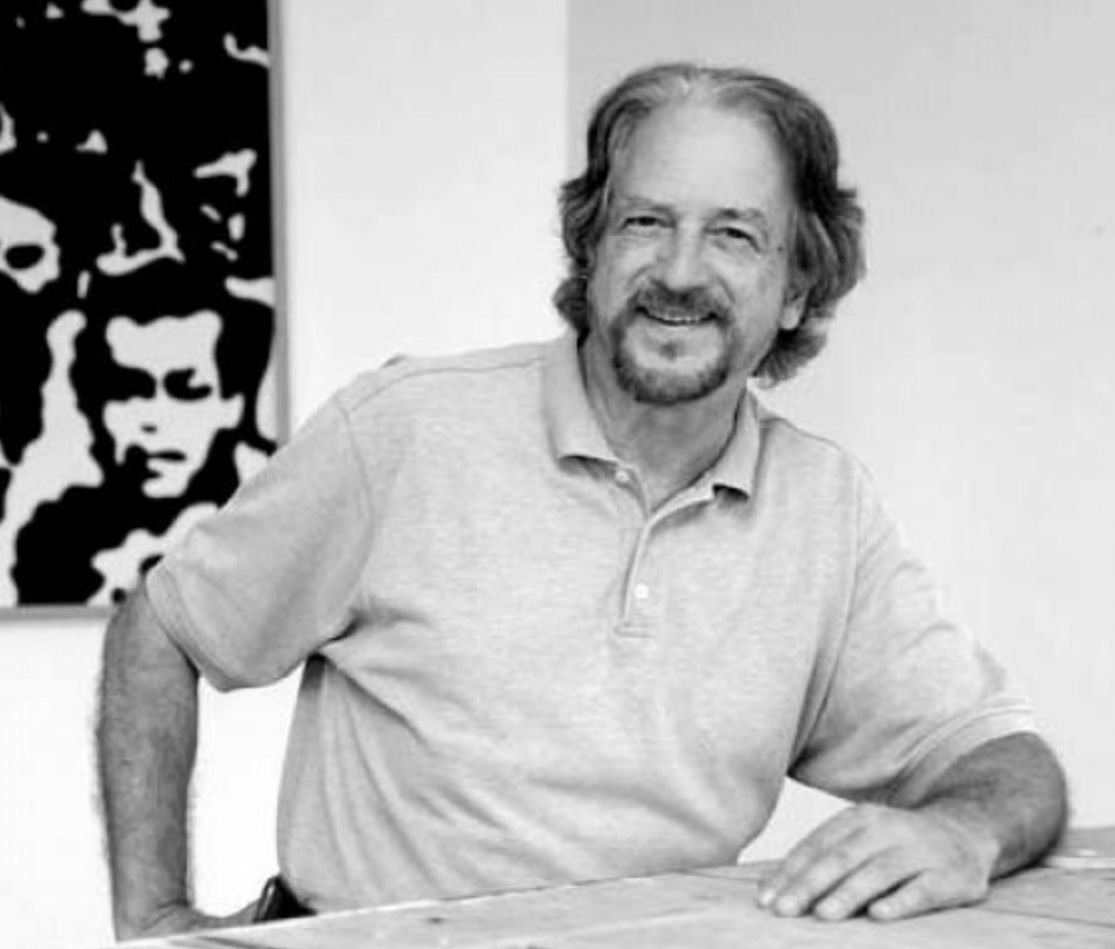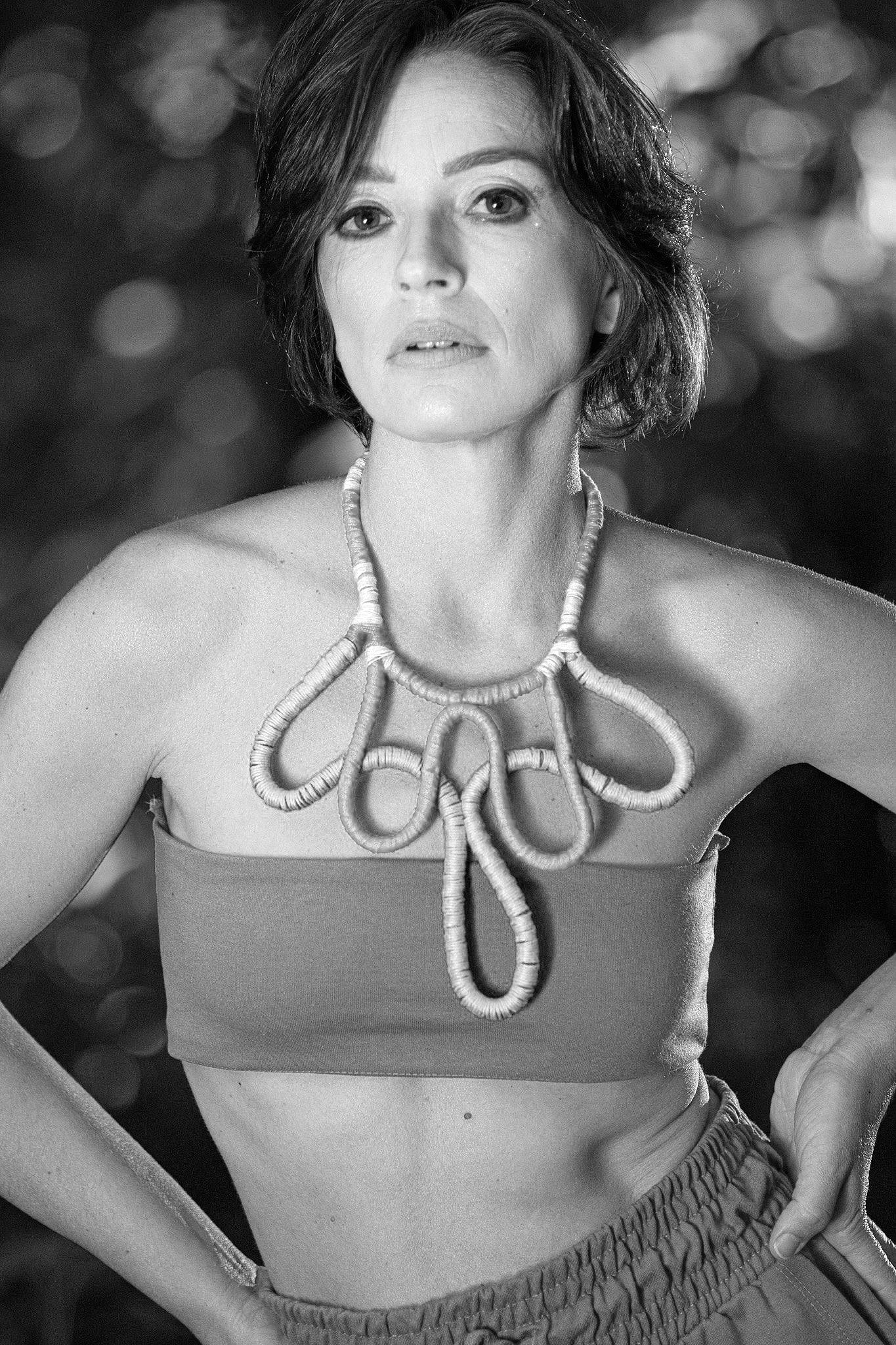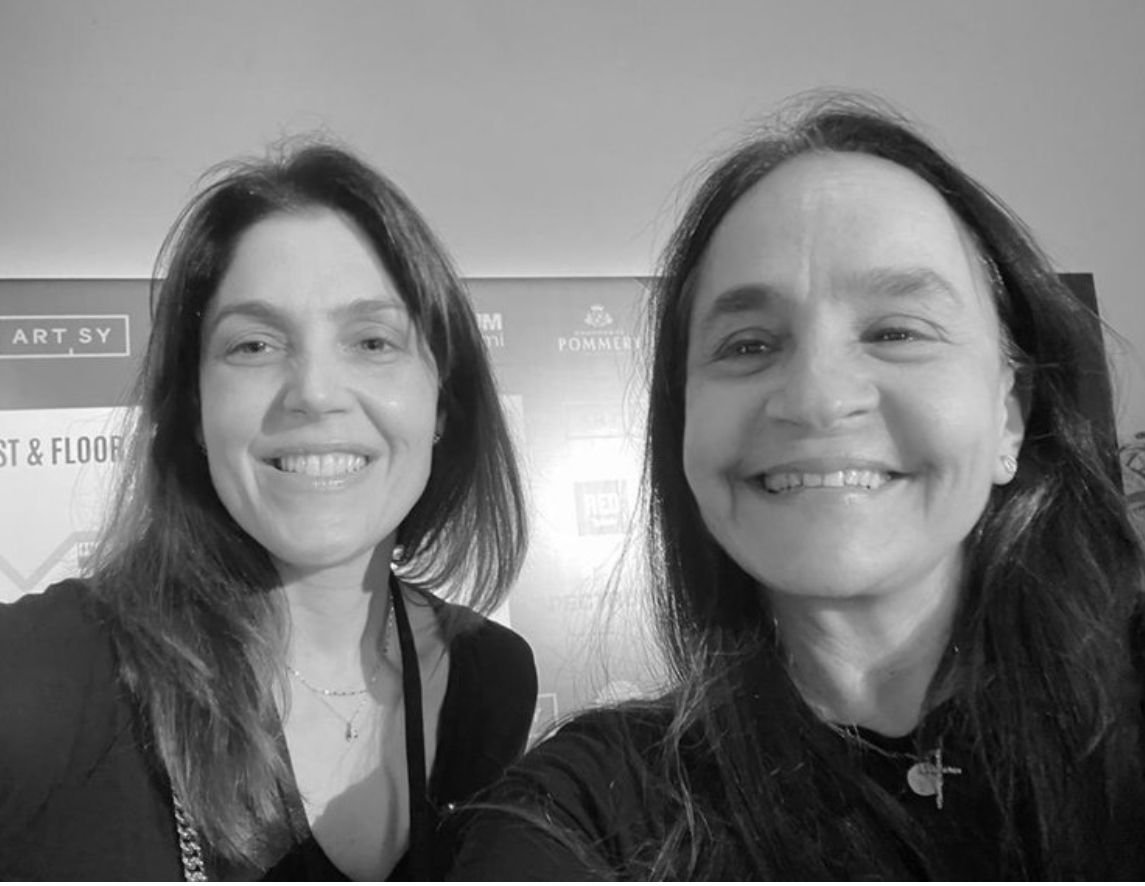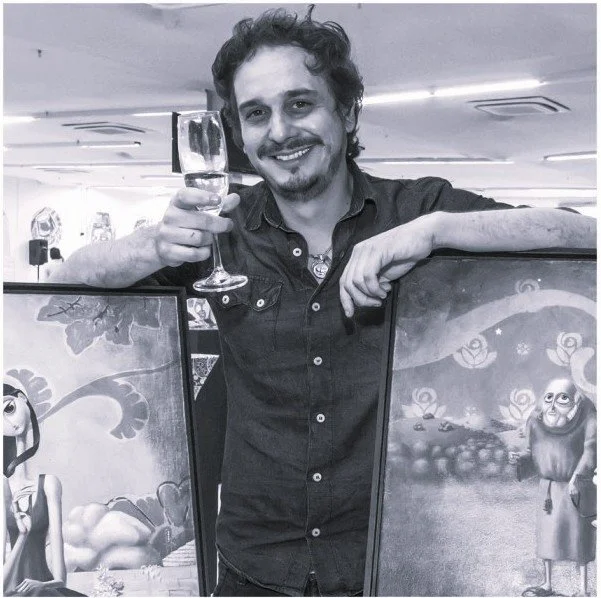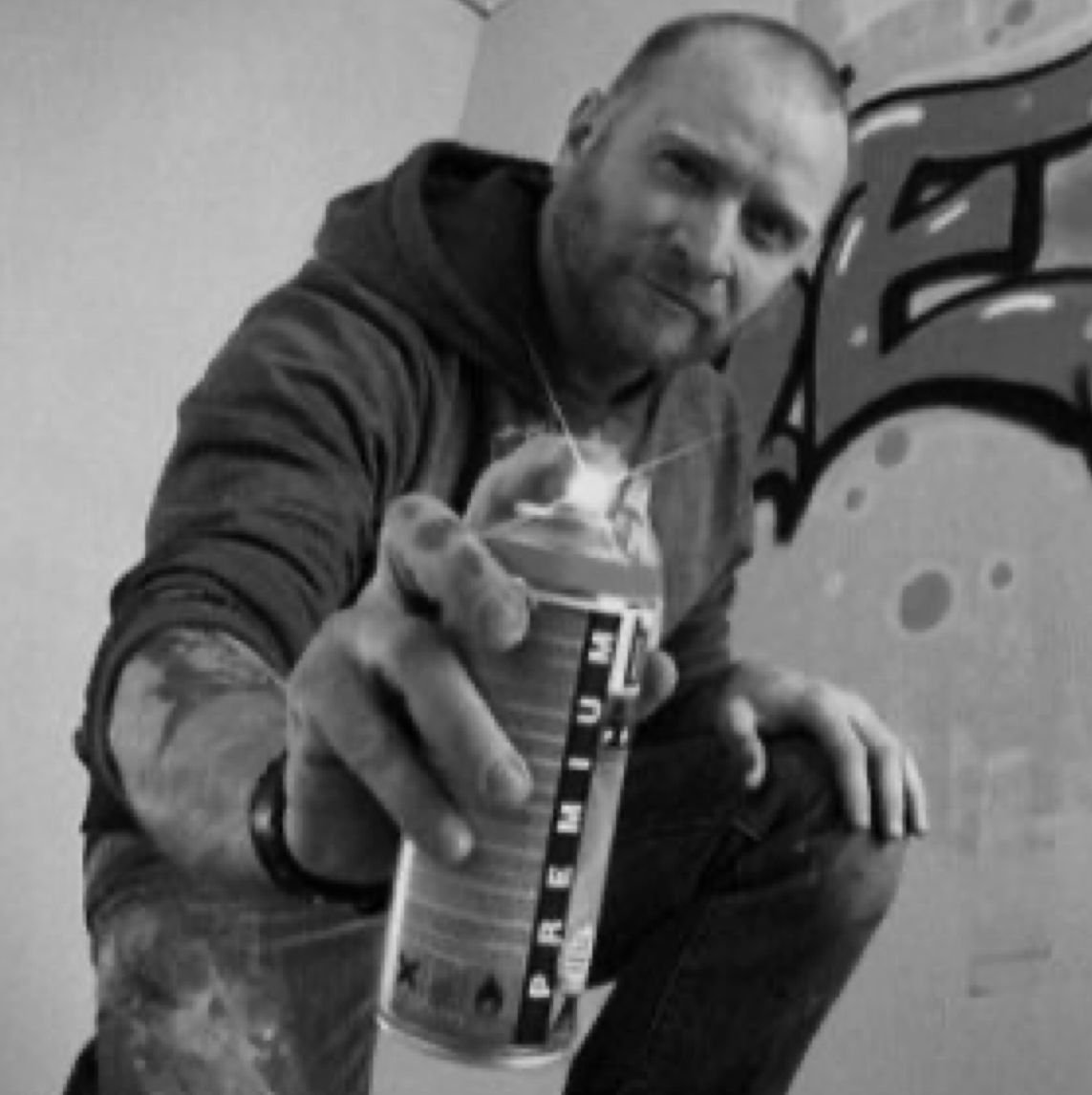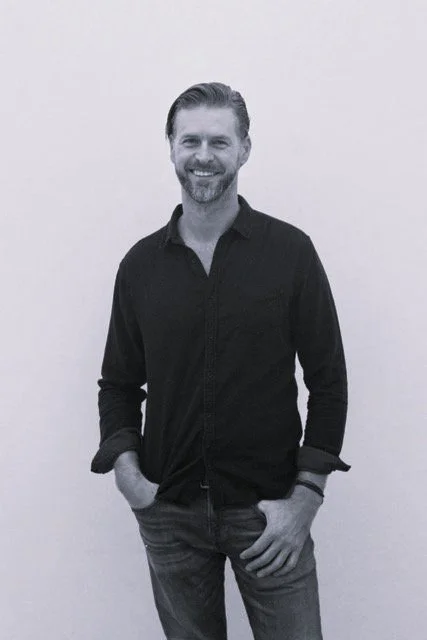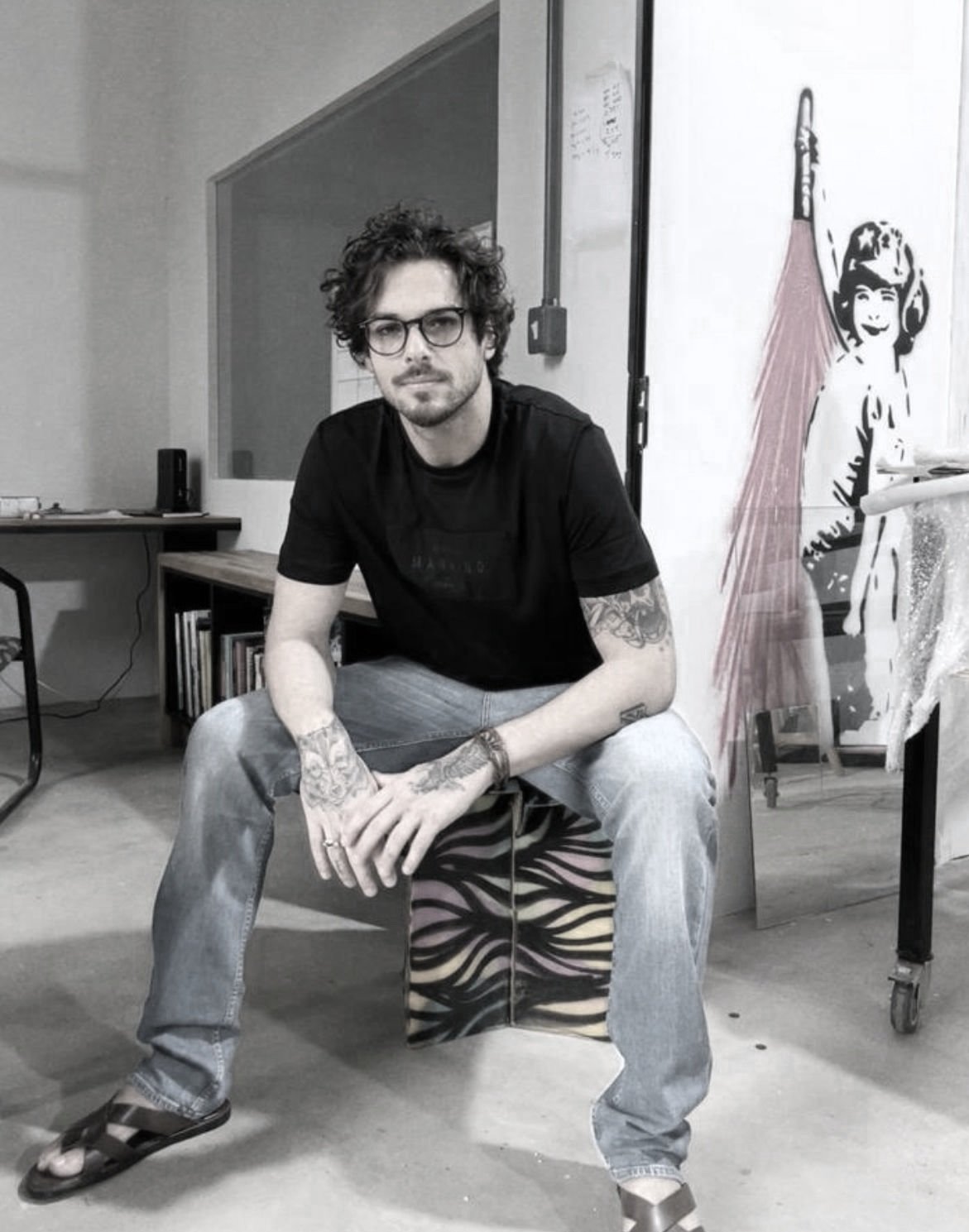MEET THE TALENTED ARTISTS
The global art market, valued at $1.7 trillion, continues to outperform various asset classes, solidifying art investment as a lucrative opportunity. Particularly in the realm of modern and contemporary art, economic benefits are propelling the market on an upward trajectory. The unique characteristics of art as an asset make it an attractive option for investors seeking diversification and potential long-term growth.
ANDRE POLI
Born in Sao Paulo, Brazil, André Poli lives in Miami. Multimedia artist. His work is quite intense with a profusion of colors and geometries.
One of the most interesting aspects of his work is the way he moves between the figurative and abstract, creating a unique language.
Since 2011 André has been the Editor-in-chief and curator of “Conceptual” – art, interior design and architecture magazine”.
The artist also works as Maison&Objet’s design curator for Latin America.
In 2016 StudioPoli, the artist’s lifestyle concept design brand launched in Miami at Maison & Objet’s America.Alfredo Ceschiatti was a Brazilian sculptor son of Italian parents. He went to Italy in 1937, benefited by the Italian government in promoting trips by the children of immigrants to the country. Back to Brazil, he settled in Rio de Janeiro where he studied at the National School of Fine Arts. He was awarded at the National Salon of Fine Arts in 1945 for the bas-relief of the baptistery of the Church of Saint Francis of Assis, in Belo Horizonte, his hometown. He met Oscar Niemeyer, who commissioned him a sculpture for the Architectural Ensemble of Pampulha, in Belo Horizonte. In a partnership with Niemeyer, he became the main sculptor of the country’s capital, Brasilia. He was part of the National Commission of Fine Arts and a professor of sculpture and drawing at the University of Brasilia.
His works are in exhibition in several Brazilian museums and public buildings, as Itamaraty Palace. The artist's taste for the female figure is present in several of his works.ALFREDO CESCHIATTI
BRUNO GIORGI
Bruno was born in Mococa, Sao Paulo, in 1905, and moved to Rome with his family in 1913. He began studying drawing and sculpture in 1920. During his time in Rome, he was involved in anti-fascist movements. In 1931, he was arrested as a political prisoner and sentenced to 7 years in prison. In 1935, he was extradited to Brazil, with the intervention of the Brazilian diplomat Hugo Gouthier de Oliveira Gondim.
In Brazil, he traveled to São Paulo, where he met Joaquim Figueira and Alfredo Volpi. In 1937, he traveled to Paris, where he attended La Grande Chaumiére and Ranson academies, studying with Aristide Maillol. He returned to Sao Paulo in 1939, where he interacted with artists such as Lasar Segall, Mário de Andrade, Oswald de Andrade, and Sérgio Milliet, among others.
He began practicing life drawing with artists from the Santa Helena Group and joined the Paulista Artistic Family (FAP), a group of artists described by art critic Geraldo Ferraz as "traditionalists, defenders of Sao Paulo's artistic conservatism." He moved to Rio de Janeiro in 1943, where he set up a studio in the former Hospício da Praia Vermelha, invited by Minister Gustavo Capanema. There, Bruno taught his art, instructing artists like Francisco Stockinger.
BRENDAN MURPHY
Brendan Murphy (B 1971) is a world-renowned contemporary artist whose works are found in prominent private collections and public displays around the world. Famous collectors include Serena Williams, Novak Djokovic, Larry Page, Warren Buffett, Ryan Gosling, and Grant Cardone among many others. Brendan currently works from his studio in Miami, FL. The sculptural work of Brendan Murphy communicates a rare perspective on the modern human experience through explorations of form, color, language, and universal symbols. Thematically, Brendan Murphy explores the interplay of beauty, power, and the need to understand the source of all the energies of life. In 2021, Brendan founded the Boonji Project and did his first NFT drop of the Boonji Avatars. It became the biggest NFT primary sale in history. He is also the man behind the “Frozen with Desire” sculpture. A 42” spaceman covered in 6,200 responsibly sourced diamonds with a total weight of 517 carts. In 2022, he also installed a 13' Boonji Spaceman sculpture in Minute Maid Park Stadium, home of the Houston Astros baseball team.CLAUDIO TOZZI
Claudio Tozzi is a Brazilian artist born in 1944 in Sao Paulo, Brazil, who has worked since the 1960s to challenge the political and social culture of Brazil and the world. Through his art, he has highlighted the censorship of military dictatorships, the woes of mass media, and the strength of individuals. He participated in the Neo-Figuration movement, primarily about issues experienced by Brazilians. Brazil lived under an oppressive dictatorship for years and the Neo-Figuration movement worked to question the physical and social conditions of the era. Tozzi's work has since been shared worldwide as he has gained popularity outside Brazil due to widely understood themes. He is one of the most well-known and influential artists in Brazil.CARLOS ALVES
Brazilian artist Carlos Alves’ paintings employ ready-made objects, collages, and assemblages with references to industrialism. He presents a unique characteristic for an artist, lacking the “color-sensitive pigment in the cells of his retina, making him fully color blind”. Nevertheless, his overwhelmingly colorful works tell a visually rich narrative through pigment, shape, form, and polished textures. For Carlos, the canvas serves as both a mask and a magnifying lens, allowing him to choose when to reveal important elements of himself and his world.
As Carlos expresses: “When I paint, I am free from the limitations of everyday reality. Restrictions, boundaries, and rules disappear as my colors and shapes form images. At the same time, I also demand the highest level of perfection from myself when I utilize all types of materials to create my artwork.”
As of 2020, Carlos Alves has had over 100 exhibits throughout the U.S. and abroad.CRISTINE BHADRAM
Cristine Bhadram is a Textile Artist and the founder of Muza Cores Naturais brand. She is currently pursuing a Master's degree in Fashion Design with a research project on natural dyeing. She holds a Bachelor's degree in Visual Arts and specializes in manual textile techniques. Her work revolves around research, teaching, and creating pro-sustainability products for the Fashion, and Art markets.
She has participated in various events showcasing her work, including the Amazônia Fashion Week 2021, Casa Cor Brasil edition Santa Catarina 2021, and served as a textile artist responsible for natural dyeing in the "Casa das Dunas" collection by Brazilian brand Pia Laus. In 2022, she took part in IXEL, the Latin American Fashion Congress in Cartagena, Colombia, showcasing naturally dyed clothing pieces.
Cristine Bhadram is the recipient of the Aldir Blanc Brazil Santa Catarina 2021 grant for her sustainable textile art project. She is also the recipient of the Culturas Brazil Santa Catarina 2021 grant for her project on sustainable practices in textile art.DABUS & THIBES
Fernanda Dabus was born in Santa Maria, Rio Grande do Sul, Brazil. She studied psychology and Psychoanalysis, these areas led to an in-depth creative process based on the extensive study and continuous development of an expressive painting that connects to the unconscious. She takes part in international exhibitions and lives and works in Miami, USA, where her studio is located. She's also a co-founder of Atelier Without Borders.
Cecilia Thibes was born in Curitiba, Parana, Brazil. She studied Art and Anthroposophy in Switzerland, Artistic Therapy, and Arts with a specialization in painting, drawing, and composition. She also graduated in Art Therapy and has lived in the USA since 2006. She studied at Rudolf Steiner College, CA, and takes part in International Exhibitions, being a co-founder of Atelier Without Borders, a non-profit organization dedicated to the arts for underprivileged populations. EDUARDO SUED
Eduardo Sued (Rio de Janeiro RJ 1925). Painter, engraver, illustrator, draftsman, stained glass artist, and professor. He graduated from the National School of Engineering of Rio de Janeiro in 1948. The following year, he studied drawing and painting with Henrique Boese. Between 1950 and 1951, he worked as a draftsman in the office of architect Oscar Niemeyer. In 1951, he traveled to Paris, where he attended La Grande Chaumière and Julian academies. During his stay in the French capital, he came into contact with the works of Pablo Picasso, Joan Miró, Henri Matisse, and Georges Braque. He returned to Rio de Janeiro in 1953 and attended Iberê Camargo's studio to study metal engraving, later becoming his assistant. He taught drawing and painting at the Escolinha de Arte do Brasil in 1956 and, the following year, moved to São Paulo, where he taught drawing, painting, and engraving at the Fundação Armando Álvares Penteado (Faap) from 1958 to 1963. In 1964, he returned to live in Rio de Janeiro and published the album of etchings "25 Gravuras". The artist did not join any movement, remaining aloof from the debates of the time. His career had a brief stage marked by figurativism, but soon he moved towards geometric abstraction. In the 1970s, he approached constructive trends, developing his work based on reflection on Piet Mondrian and the Bauhaus. Between 1974 and 1980, he taught metal engraving at the Museum of Modern Art in Rio de Janeiro (MAM/RJ).EDU CARDOSO
Edu Cardoso is an artist born in Avaré, São Paulo, who draws significant inspiration from Brazilian comic books of the 1980s. He began drawing at the age of 9 and has since honed his skills in drawing, painting, and sculpture.
As a self-taught artist, Edu incorporates elements of intuitive art, particularly in his creation of dreamlike scenarios. His work spans pop surrealism, fantastic realism, and hyperrealism, often infused with a touch of psychedelia.
Self-taught and passionate about the circus universe, Edu Cardoso transports viewers to dreamlike scenarios where reality blends with fantasy. His works combine fantastic realism and Brazilian culture, featuring melancholic characters, figures from commedia dell’arte, and folkloric legends like sacis and river dolphins.
With a distinctive style, his paintings explore unusual perspectives, light play, and visual metaphors, creating compositions that evoke mystery and introspection. Recognized in Brazil and abroad, Cardoso turns art into a gateway to imaginary worlds.EDU DANESI
Originally from Sao Paulo in Brazil, Edu Danesi has lived and worked in Belgium and France since 1996. A few years after graduating from the School of Photography in the city of Brussels, the photographer converted to painting.
Mainly self-taught, he works with several techniques such as painting, collage, drawing, graffiti, and stenciling on different supports such as canvas, wood, metal, body parts, or simply walls. Edu believes that “The importance is that the image speaks, it conveys something, an emotion… ”
It is this mixture between the vision of the photographer and the work of the painter, with a touch of southern blood, giving the images a cocktail full of colors, sensuality, poetry, provocation, and positivity. A cocktail of complete emotions.
The works on the hoods of the mythical 911 made by Edu DANESI appeared in 2015. The hoods are recognized directly at first sight by their vibrant colors, the style of painting, and the glossy finish. The hoods are handmade and spray-painted without any printing or stickers. He has produced an exceptional work for an exceptional character Magnus WALKER; the black sheep of the large Porsche family.Ernesto Kunde was born in Paraíso do Sul, Brazil in 1973. After a brief stint re-discovering his family roots in Germany (where he worked in agriculture in Mosbach), Kunde returned to Brazil in 1995 where he first began his artistic journey by experimenting with works on paper: drawings and controlled coffee stains. Since then, Kunde has narrowed his aesthetic focus into painting on a diverse range of surfaces (most prominently found wood and canvas). Kunde has shown extensively throughout South Florida at venues such as the Sardinas Gallery at St. Thomas University, the Art and Culture Center of Hollywood, the Little Haiti Cultural Center and Locust Project's for the annual Smash 'N' Grab Fundraiser (2009-2012). His work is represented by Miami-based HANGAR Gallery and he has shown in 2012 and 2013 editions of SCOPE Miami ART MIAMI Context Art Fair. Drew Marc Gallery in St.Petesburg He is currently an artist-in-residence at the Bakehouse Art Complex and his work has been featured in local outlets such as artmiami.tv, The Sun-Sentinel and Irreversible Magazine. Studio Visit. FloridaDesign Magazine Kunde lives and works in Miami ERNESTO KUNDE
Gian Luca Ewbank Baldacconi experiments with new supports and formats for his language. His work embraces the richness of the encounter between media, techniques, and ideas, opening paths for "new trends and possibilities". His references come from Pop Art, Op Art, Street Art, and also with research on the concepts of the Expressionist and Dadaist movements. The sum of materials and concepts makes the artist's work stand out among contemporary works. The diverse profile of each material and the encounter between word and image are two norths of Ewbank's poetry.
Initially, one can notice this affection and persistence in the use and fascination with different media. Aside from the pieces on canvas, such a thought of juxtaposition and a mix of diverse elements expands the space in Ewbank's three-dimensional works. It is easy to realize that the artist creates pieces, with the correlation with writing in mind. He is explicitly enchanted by the mix of message and appeal, transparency and presence, beyond the seductive and decodable scope that is located and travels with ease.
His speech has more connections with persistence and an uninterrupted fascination with the alchemy of doing, mixing material creation and filled with concreteness, flanked by robust concepts to be fixed during such shallow and volatile times.GIAN LUCA EWBANK
HAMILTON AGUIAR
Hamilton Aguiar, born in Brazil in 1965, is an accomplished contemporary artist with a career spanning over two decades. His work is known for its striking interplay of light, texture, and unconventional materials, blending abstraction and realism to evoke emotional and sensory depth.
Influenced by the landscapes of upstate New York, Aguiar began with tranquil winter scenes before evolving his style in Miami to include luminous seascapes, abstract florals, and his acclaimed Opticals series. Throughout his career, themes of peace, nature, and emotional resonance have remained central.
Aguiar combines oils, acrylics, resin, and reflective materials like silver leaf and aluminum, creating artworks that shift with the viewer’s perspective. His intuitive, yet precise, approach invites personal interpretation and connection, offering a visual language that is both poetic and innovative.
JAY BOGGO
JAY BOGGO
(b. 1979)
Stylist and visual artist born in Joinville, Jay started his career as a self-taught artist.
With more than 20 years of experience at the forefront of the textile industry and as a connoisseur of raw materials, he founded J.BOGGO + and today works at the head of the brand, in addition to taking over the creative direction. All of his experience and personal transformation led him to give lectures at schools universities, and research and creation centers. He is an artist by profession through his works in paintings as well as the head of the clothing and lifestyle brand J.BOGGO +. In addition to being a designer for the brand, he paints pictures and is recognized at fairs and exhibitions in Brazil and abroad.J. MARGULIS
J. Margulis was born in Caracas, Venezuela in 1970, Margulis works predominantly in the medium of Geometric 3D Sculpture, Mixed media, and Photography. Margulis completed advanced courses in photography and master B&W lab work under Ricardo Ferreira at Instituto Neumann in Caracas, Venezuela from 1986 to 1990.
Margulis also holds a BA in Management from Universidad Metropolitana in Caracas completed in 1994. He runs a full-time art fabrication shop that allows his prolific artistic nature to approach his work with a resolute determination to physically explore the field of geometric three-dimensional art. He has participated in several exhibitions and relevant International Art fairs and his art belongs in private collections in Costa Rica, Mexico, Venezuela, Peru, Italy, Spain, Australia, and the United States. J. Margulis resides and works in Miami, Florida with his wife and three children.KAZUO WAKABAYASHI
Born in 1931, in Kobe, Japan. Between 1947 and 1950, he attended the School of Fine Arts and the Niki Academy, in Tokyo, and Kanosuke Tamura's drawing and painting classes. Back in Kobe, he prepared to enter the Faculty of Architecture at the University of Tokyo, but abandoned architecture in 1950, turning to painting. In 1953, he became a member of the group Seibi and published an album of paintings and poetry. Between the 1940s and 1960s, he participated in Japanese salons, receiving awards in 1947, 1950, 1954, and 1959. He emigrated to Brazil in 1961, settling in Sao Paulo. He becomes a member of Grupo Seibi, presented by Manabu Mabe and Tomie Ohtake. Two years later, he received a gold medal at both the 12th Sao Paulo Salon of Modern Art and the 7th Salon of the Seibi Group of Plastic Artists. He was awarded the first prize at the April Salon of the Museum of Modern Art of Rio de Janeiro-MAM/RJ, in 1966. He participated in several editions of the Sao Paulo International Biennial, between 1963 and 1967, receiving several awards.KENJI FUKUDA
KENJI FUKUDA - (1943) The plastic artist Kenji Fukuda has not joined the profession by chance. Son of the plastic also Tamotsu Fukuda, a pioneer of Japanese immigrants in Brazil, admits that the gift is "genetic." Influenced by his father, at age 12 began to give the first strokes in the world of arts, drafts that would transform it into one of the artists Nissei most influential and important in Brazil. Fukuda won the recognition of the public and the criticism of Brazil and the world. Sculpture The gift of Kenji Fukuda for the sculpture is also proportional to the gift of the artist to paint. And it was precisely in the field of sculpture that his name was immortalized in Brazil in 2007. Fukuda was responsible for creating the monument commemorating the Pan American Games, in Rio de Janeiro. The building, located at Avenida Abelardo Bueno, in Barra da Tijuca, Rio de Janeiro, is 15 meters high and weighs five tons. For Fukuda, the call for this work was the full recognition of his work as a Brazilian plastic artist.JORGE DOS ANJOS
Jorge dos Anjos (b. 1957, Ouro Preto, Brazil) is a prominent contemporary artist from Minas Gerais, widely recognized for his contributions to Brazilian sculpture and printmaking. Rooted in the rich visual and cultural heritage of his hometown, his work is deeply influenced by Baroque aesthetics, African symbolism, and Afro-Brazilian spiritual traditions. Since the 1970s, Jorge has explored a wide range of expressive materials and techniques, including iron, soapstone, wood, cardboard, felt, and fire. His sculptures often emerge from original drawings, resulting in striking three-dimensional forms characterized by folds, silhouettes, and abstract volumes. His engagement with Candomblé and Black cultural movements in Brazil has informed both the content and spirit of his work, leading to public monuments such as Portal da Memória (Pampulha, Belo Horizonte) and Zumbi: Freedom and Resistance – 300 Years. Jorge’s art is featured in museums, public collections, and critical publications across Brazil.MANABU MABE
Manabu Mabe is a lyrical abstract painter known for his association with the Grupo Seibi of Japanese-Brazilian artists. His works are recognized by their use of bold color and calligraphic gestures. Mabe immigrated with his family from Japan to Brazil in 1934 to work on a coffee plantation. He began painting in 1945, receiving guidance from artists such as Tomoo Handa and Yoshiya Takaoka. Mabe turned to abstraction in the 1950s and quickly escalated to fame, repeatedly showing with the Grupo Seibi and in international exhibitions. In 1959, he won the top prizes at the Sao Paulo Bienal and the inaugural Biennale de Paris, leading Time magazine to proclaim it “The Year of Manabu Mabe.” An untitled painting from this career-defining year sold for $93,750 at auction in 2014. A year later, Mabe won the Fiat Prize at the 1960 Venice Biennale. In his work from the 1970s onward, Mabe began to incorporate abstract masses that insinuated figuration. He had a major retrospective at the São Paulo Museum of Art in 1986.MANUELA ALMEIDA
The artist work combines craftsmanship and design, exploring unique elements and textures, enhancing the exuberance of materials and creative work. The carefully handmade artworks take shape through knots and weaves, ranging from small elements to larger sculptures, and furniture. The contours of the knots are shaped by the artist’s ever-changing perspective. Inspired by the dynamism and contemporary chaos that connects with the ancestral nature of textile creation, the artist invites the audience to linger in contemplation, providing an opportunity to unwind, slow gazing at the unique connection between ropes, knots and art.NINA COIMBRA
Nina Coimbra is a Brazilian artist. Born in Brasília in 1984, Nina studied fine arts at the state university of New York and continued her studies in art restoration and conservation at IDM Firenze, Italy. Nina is a multi-artist ranging her technical skills to many different supports, from furniture design, to painting and ceramics. As a curator, Coimbra has been a co-curator of international expositions such as “Casa Brasil NY 2022” and Design Week Mexico 2022. Nina Coimbra works freely in the attempt of exposing her delicate yet fierce perception of what it means to be Brazilian, woman and artist in this world.POLITICS
Politics - Modern Artist
Politics, the visionary behind "Kinetic Impressions," coined this term to crystallize the essence of his distinctive artistic style. Feeling that his creations were inadequately represented within the broad spectrum of three-dimensional art, he sought a more nuanced classification. Born Daniel Acero in 1983, Politics hails from the tranquil landscapes of Fusagasuga, a small city in the Colombian countryside. At the age of 14, he embarked on a transformative journey to Miami in 1998, a city he has called home ever since.
Immersed in the vibrant tapestry of Miami's diversity, Politics found the ideal backdrop to nurture his artistic evolution. Originally trained in product design, he made a pivotal shift from crafting products to sculpting unique, one-of-a-kind masterpieces. Each series conceived by Politics is a deliberate exploration, aiming to unveil fresh perspectives and evoke a myriad of emotions.
Enamored by the concept of offering collectors the chance to possess exclusive and rare artworks, Politics endeavors to deliver unparalleled aesthetic experiences. Through his tireless pursuit of pushing artistic boundaries, he continues to create captivating pieces that resonate with unique meanings and emotions.R2 STUDIO
Founded by Roberta Romanelli and Rodolpho Rivolta, R² Studio operates at the intersection of art and design, working with unconventional materials, from industrial raw elements to upcycled components, to create works that subvert audience expectations. Their creations, imbued with a pop and ultra-contemporary aesthetic, are characterized by refined humor and a provocative, captivating visual language. The studio also frequently collaborates with renowned artists, reflecting an open and dynamic engagement with the national art scene. This results in works rich in diversity and vitality, spanning various formats such as sculpture, painting, and photography.
Each piece conceived by R² Studio evokes a narrative that transcends the object itself, creating space for critical reflection on the role of art in everyday life and its potential to reshape perception. Through exhibitions on prestigious international platforms, the studio has brought its innovative vision to a wide audience, solidifying its relevance within the national art landscape and earning recognition for its multidisciplinary and forward-thinking approach to contemporary art.REVOLUE
Born in Sao Paulo, one of the largest cities in the world, REVOLUE has transferred a lot of aspects of his home city on canvas. Artist’s works are inspired by the chaos and the constant flow of information that the urban city is associated with. In his working process, REVOLUE has adopted mixed techniques ranging from oil painting to less traditional elements such as crayons and spray. His expressive works portray the nuances of chaotic human nature. In 2023, the artist was one of the 100 individuals invited by Disney to celebrate the brand’s centenary by creating a unique canvas piece that infused the Revolue style into one of Disney’s beloved characters. This special collaboration between contemporary art and the magic of Disney resulted in a work that captures the character’s unique essence, offering a fascinating and distinctive perspective for fans of both worlds. The artist is currently represented by galleries in Vienna, New York, and Asia and has gained both national and international acclaim.
He has presented his works at exhibitions in major venues of the contemporary art world in New York, Paris, Hong Kong, Los Angeles, Amsterdam, Lisbon, London, Paris, and Sao Paulo.RUBENS GERCHMAN
Rubens Gerchman (1942–2008) was a pioneering Brazilian artist whose work bridged avant-garde movements, pop art, and political critique. Born in Rio de Janeiro, Gerchman was known for his vibrant, socially engaged works that incorporated elements of mass culture—such as football, television, and photonovelas—into bold visual statements on urban life and identity. Influenced by concrete and neoconcrete art, Gerchman rose to prominence in the 1960s with his participation in key exhibitions such as Opinião 65 and Nova Objetividade Brasileira, alongside figures like Hélio Oiticica and Ivan Serpa. He was awarded a residency in New York, where he lived from 1968 to 1972 and engaged with the international art scene. A committed educator and cultural agitator, Gerchman directed the transformation of the Instituto de Belas Artes into the Escola de Artes Visuais do Parque Lage in Rio de Janeiro, advocating for radical changes in arts education. He also co-founded the influential magazine Malasartes, promoting conceptual and experimental art in Brazil. His iconic work Lindonéia, the Gioconda of the Suburbs became a symbol of the Tropicália movement, inspiring a song by Caetano Veloso. Throughout his career, he exhibited widely across the Americas, Europe, and Asia. Gerchman’s legacy is one of innovation, activism, and deep connection with Brazil’s cultural landscape.ROBERTO BURLE MARX
Roberto Burle Marx is considered the father of tropical garden design and a revolutionary figure in the history of modernist landscape architecture. Influenced by abstract art and the flora of his native Brazil, he designed nearly 3,000 gardens, collaborating with architectural legends like Le Corbusier and Oscar Niemeyer. Burle Marx became interested in landscaping as a painting student in Berlin, where he would visit the city’s botanical garden. In 1930, he studied under the architect Lúcio Costa and painters Leo Putz and Candido Portinari. His gardens —dynamic topographies teeming with lush, sculptural flora and winding routes —were the subject of a retrospective at the Museum of Modern Art in 1991, just three years before his death. In 2019, the New York Botanical Garden presented a blockbuster solo exhibition of his work that drew some 240,000 visitors. Burle Marx also expressed his reverence for nature and abstraction in mediums such as painting, printmaking, and jewelry.Simone Michielin is a Brazilian artist - painter, illustrator, researcher, and student of various techniques and forms of artistic exploration. Graduated in Law, her base as a visual artist is formed through free courses, study groups, experiments and artistic guidance, and participation in professional and collective associations, to get involved in different areas of production and creative processes. She participated in several individual and collective conversations, in Brazil, Italy, and the United States. She also worked on large-scale public art. Simone usually works by mixing drawing, digital screen printing, photography, hand painting, digital painting and illustration, embroidery, and digital application, also applied on different platforms (canvas, plexiglass, wall, fabric, fiberglass sculptures, resin, and others). She is the creator of the brand FaberWHO?, a line of collectible pop sculptures, registered in her name. Currently, Simone lives and works in Italy, strengthening her operations in Europe and the United States.SIMONE MICHIELIEN
YUGO MABE
Born in Lins – Sao Paulo 05/01/1955. He graduated in communication from FIAM/Sao Paulo, in 1977. Son of the painter Manabu Mabe, he maintained contact with the arts from a very early age and, in the early 70s, began to participate in group shows, eventually winning awards. In 1980, he held his first solo exhibition at Documenta Galeria de Arte, in Sao Paulo, consolidating a career of intense artistic activity. Among the exhibitions in which he participated, the following stand out: Salão Bunkyo, Sao Paulo, 1972/1975 Bronze Medal, 1972 Silver Medal, 1975 Salao Paulista de Belas Artes, Sao Paulo, 1975/1982 Silver Medal, 1982 Salao Brasileiro de Arts, at Fundação Okada-Moa, Sao Paulo, several editions between 1978 and 1996 Yugo, at Documenta Galeria de Arte, Sao Paulo, 1983 Yugo, at Galeria de Arte Antonio Bandeira, Rio de Janeiro, 1984 Brazil-Japan Fine Arts Exhibition, at the Fundaçao Brasil-Japan de Artes Plásticas, Sao Paulo, 1985 Art Miami 92, at the International Art Exposition, Miami United States, 1992 Brazil-Japan Friendship Centenary Exhibition, at the Metropolitan Museum of Curitiba, 1995 Yugo Mabe, at the Joh Mabe Office de Arte, Sao Paulo, 1996 Tempo Virtual, at Espaço Paulista de Arte, Sao Paulo, 1996.RUBEM LUDOLF
Rubem Ludolf (1932–2010) was a Brazilian painter, architect, and landscape designer, known for his association with the Grupo Frente and the Concrete Art movement of the 1950s. Born in Maceió and later based in Rio de Janeiro, Ludolf studied under Ivan Serpa at the Museu de Arte Moderna do Rio de Janeiro, joining a generation of groundbreaking artists including Lygia Clark, Hélio Oiticica, and Lygia Pape.
His work was deeply rooted in geometric abstraction and constructivist principles, often exploring spatial harmony, color, and structural balance. Ludolf participated in five editions of the São Paulo Biennial between 1955 and 1967, receiving the Acquisition Prize in 1967 and later being featured in the special tribute room “Arte Construída: Homenagem a Waldemar Cordeiro” at the 12th Biennial in 1973.
Ludolf was also recognized internationally, with prizes from the Biennials of Bahia and Paris, and left a lasting contribution to Brazilian modernism through both his visual art and architectural practice.YUTAKA TOYOTA
Yutaka Toyota is a Japanese-Brazilian sculptor, painter, and designer renowned for his innovative use of metal, light, and movement to create dynamic, spatially engaging artworks. Born in Japan in 1931, Toyota studied fine arts before immigrating to Brazil in 1958, where he became a key figure in the country’s neo-concrete and kinetic art movements.
His work is characterized by polished stainless steel surfaces, optical illusions, and geometric forms that interact with light and the surrounding space. These reflective sculptures challenge the viewer’s perception, a concept deeply influenced by both Zen philosophy and modernist abstraction.
Toyota’s artistic career includes public monuments, museum exhibitions, and architectural collaborations, with notable works displayed in São Paulo, Rio de Janeiro, and international collections. His large-scale sculptures, such as those installed in urban spaces and corporate buildings, emphasize his fascination with the infinite and the interplay between the material and the immaterial.The soul of ARC is Viola Pineider, designer and founder. Born and lived in Florence, Italy.
Her professional training is the sum of her experiences with talented underground artists from the 90s/2000s and 12 years of work in traditional Italian carpentry.
After having practiced for 5 years with an experienced cabinetmaker, in 2010 she took over the management of the activity and carried out numerous restoration work on furniture and interior decoration. The love for restoring antique furniture, developed the artist's attentive and accurate look and an aesthetic sense, typical of someone who has the ability to combine shapes and colors.
Currently in Rio de Janeiro, she connects with other artistic experiences and deepens the study in the world of contemporary art
With the naturalness of someone who grew up surrounded by art, in addition to a solid technical background, Viola created her own style that combines the creativity of an unconventional world with the elegance and lightness of Italian design. In 2018 she founded ARC and got closer to the universe of contemporary jewelry.
She is currently deepening her research and studies about contemporary art and sculpture following a path that moves between art and design.



